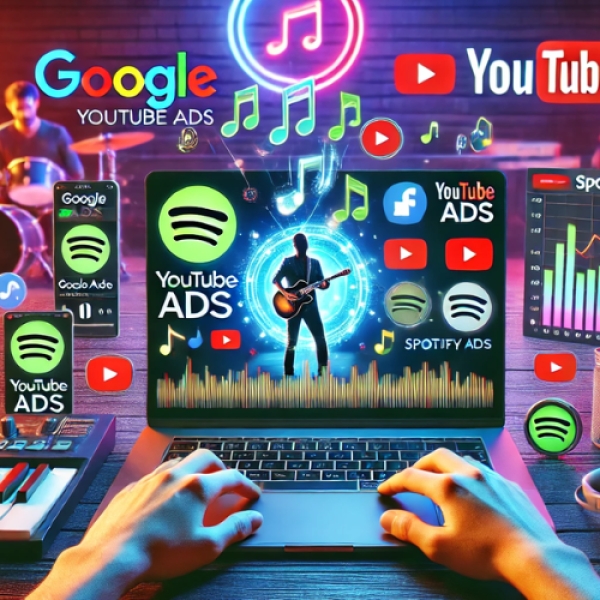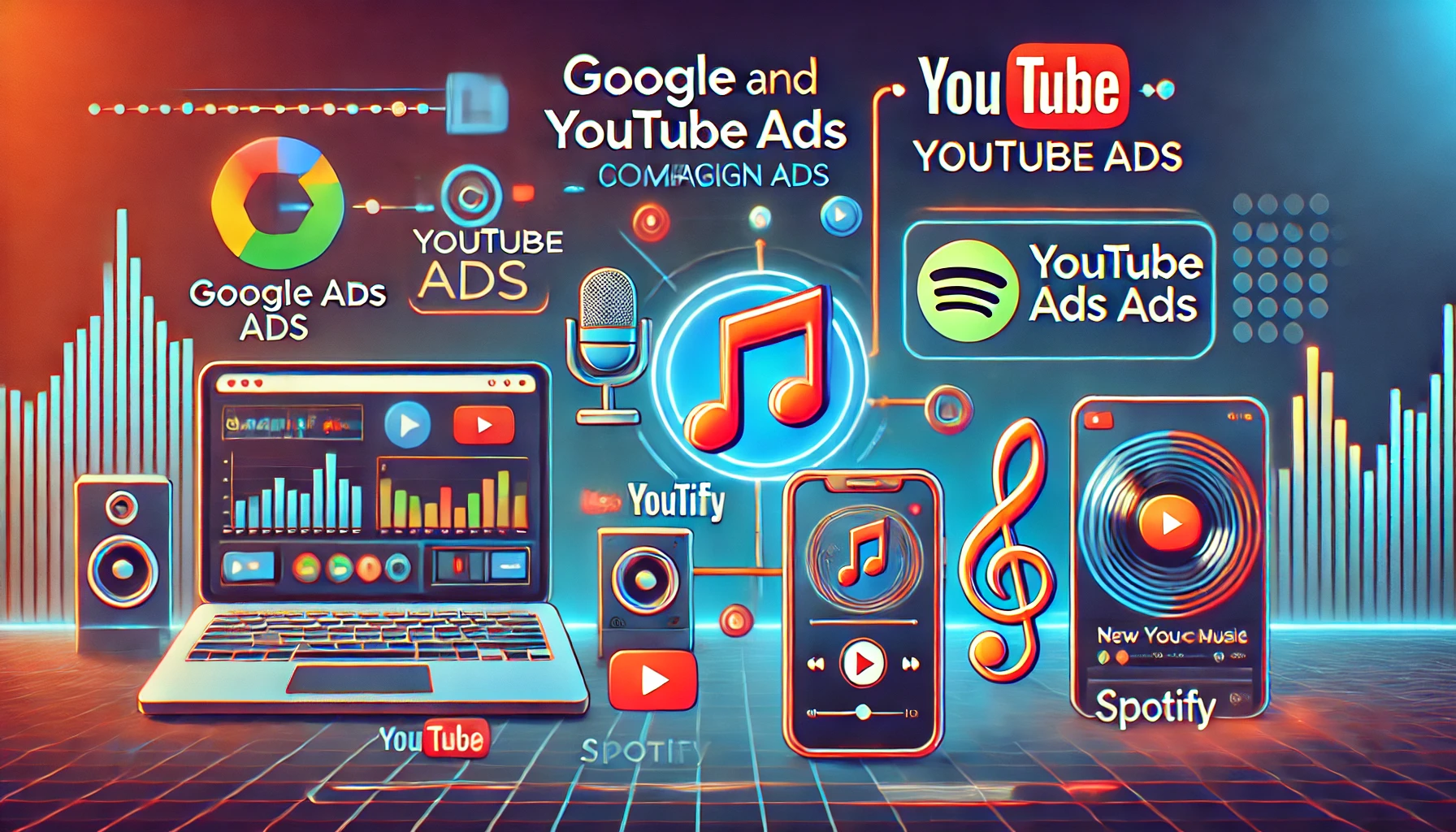How to Use Google and YouTube Ads to Promote Your New Release on Spotify
Releasing new music is exciting, but getting it in front of the right audience is crucial for success. One of the most effective ways to drive streams and engagement on Spotify is through Google and YouTube Ads. These platforms provide highly targeted advertising options that can help your music reach the right listeners. In this guide, we’ll break down the steps to effectively use Google and YouTube Ads to promote your latest release on Spotify.
1. Understanding the Power of Google and YouTube Ads
Google Ads includes YouTube Ads as part of its advertising ecosystem. Since YouTube is the second-largest search engine in the world and a major platform for music discovery, running ads here can be an effective way to introduce your music to new fans. Meanwhile, Google’s search and display ads allow you to target users who are already searching for related content.
By using these tools, you can:
- Target users based on their listening habits and interests.
- Direct potential fans straight to your Spotify release.
- Gain insights into how your audience interacts with your ads.
- Increase engagement through multiple ad formats.
2. Setting Up Your Google Ads Account
Before you begin, you’ll need to create a Google Ads account if you don’t already have one. Visit ads.google.com and follow the instructions to set up your account.
Once your account is ready, link it to your YouTube channel to gain access to video ad placements. If you’re planning to run Display or Search ads, ensure your website or landing page (such as a Linktree or a SmartURL leading to Spotify) is set up.
3. Choosing the Right Ad Format
Google and YouTube offer various ad formats that can work well for music promotion:
YouTube Video Ads
- Skippable In-Stream Ads: These ads play before, during, or after YouTube videos and can be skipped after 5 seconds. They are great for showcasing a teaser of your track or music video.
- Non-Skippable In-Stream Ads: These are 15-second (or shorter) ads that cannot be skipped. Use them to create high-impact, engaging content.
- YouTube Shorts Ads: Shorts are rising in popularity, and running ads here can help you reach a younger audience who loves quick, catchy clips.
Google Display and Search Ads
- Display Ads: Banner ads appearing on relevant websites and YouTube’s sidebar. Use eye-catching graphics to entice clicks.
- Search Ads: Text-based ads appearing on Google when users search for related music or artists. Optimize them with keywords like “best new Tech House music” or “Chicago House tracks.”
4. Defining Your Target Audience
One of the key advantages of Google and YouTube Ads is their powerful targeting options. When setting up your campaign, define your audience based on:
- Demographics: Age, gender, location, and language.
- Interests: Users who follow similar artists, playlists, or music genres.
- Behaviors: Those who actively engage with music content on YouTube or have visited music streaming platforms.
- Keywords: Target searches related to your music style or Spotify playlists.
For example, if you’re promoting a Tech House release, target users who watch videos from artists like Fisher, Chris Lake, or Dom Dolla.
5. Crafting an Engaging Ad
Your ad creative is what will grab attention and convert viewers into Spotify listeners. Here are some tips:
- Use High-Quality Visuals: A strong thumbnail or video clip that reflects your music’s vibe.
- Keep It Short and Engaging: Capture interest within the first 5 seconds.
- Include a Call-to-Action (CTA): Direct users to “Listen on Spotify” with a link.
- Leverage FOMO: Use phrases like “Be the first to hear this track!”
6. Setting Your Budget and Bidding Strategy
Google Ads works on a pay-per-click (PPC) or cost-per-thousand-impressions (CPM) basis. Start with a daily budget you’re comfortable with and test different bid strategies. Options include:
- Maximize Clicks: Focuses on getting the most clicks to your Spotify link.
- Target Cost Per View (CPV): Controls how much you pay per video view.
- Maximize Conversions: Lets Google optimize for more Spotify plays.
7. Tracking Performance and Optimizing
After launching your campaign, monitor its performance using Google Ads analytics. Key metrics to track include:
- Click-Through Rate (CTR): Measures how many people clicked your ad.
- View Rate: How many people watched your video ad.
- Conversion Rate: How many clicked and went to Spotify.
If an ad isn’t performing well, tweak your targeting, creative, or budget allocation. A/B testing different versions of your ad can help determine what works best.
8. Retargeting and Scaling Up
Retargeting is a powerful tool to keep engaging with users who showed interest in your music. Use YouTube’s remarketing feature to show ads to those who:
- Watched your video but didn’t click.
- Engaged with your past YouTube content.
- Visited your website or landing page.
As your campaign gains traction, consider increasing your budget and expanding to new audience segments.
Final Thoughts
Google and YouTube Ads are powerful tools for promoting your music on Spotify. By carefully targeting the right audience, creating engaging ad content, and continuously optimizing your campaigns, you can drive more streams and grow your fan base effectively.
If you haven’t tried advertising for your releases yet, now is the perfect time to get started. With the right strategy, your next track could be the one everyone is streaming!



